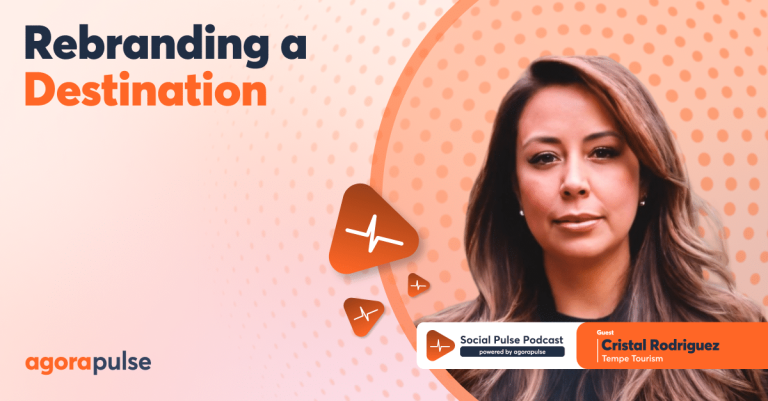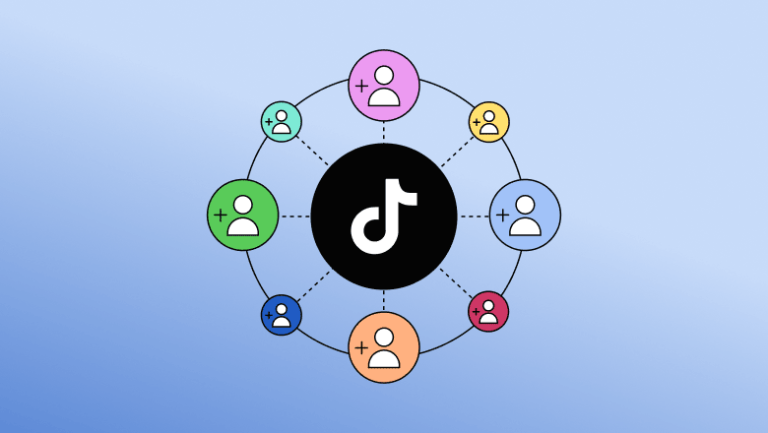
LinkedIn advertising and marketing ROI is the return you earn from the time, cash and sources you set into LinkedIn campaigns. It’s the way you measure whether or not LinkedIn helps your corporation drive income throughout paid and natural efforts.
Measuring LinkedIn advertising and marketing ROI is essential for driving strategic progress, boosting your backside line and demonstrating worth. Whereas your upfront funding in LinkedIn could also be important, it’s counterbalanced by the distinct strategic benefits LinkedIn affords B2B firms. Monitoring your ROI on LinkedIn offers the clear information it’s good to optimize efficiency and inform future advertising and marketing campaigns. Plus, LinkedIn is without doubt one of the solely social media networks that monetizes its natural providing—you may pay for a premium firm web page or a premium private profile. Neither is required, nevertheless it stands to purpose that being a paying buyer will give your model extra visibility.
B2B entrepreneurs already acknowledge this worth: LinkedIn is the fastest-growing community for B2B methods worldwide, in accordance with August 2024 information.
As funding in LinkedIn advertising and marketing grows, the necessity to precisely measure ROI turns into much more crucial. It’s important for justifying spend, monitoring efficiency and making use of insights to tell methods—in addition to enabling social groups to attach the dots between their advertising and marketing efforts and their enterprise affect to management.
Find out how to calculate LinkedIn advertising and marketing ROI: Formulation and measurement methods
Measuring ROI on LinkedIn will rely in your marketing campaign strategy—whether or not you’re measuring paid advertisements, natural efforts or a hybrid of each. For paid campaigns, entrepreneurs usually monitor return on advert spend (ROAS) to gauge rapid efficiency. However natural and hybrid efforts usually require a broader ROI calculation for a whole view. In the end, each ROAS and ROI attempt to reply the identical query: Did your advertising and marketing investments generate a beneficial return?
Entrepreneurs usually measure these metrics with easy formulation:
- ROI: (Return – Funding) ÷ Funding
- ROAS: Income from LinkedIn Advertisements ÷ LinkedIn Advert Spend
Measuring your funding is fairly simple. It contains how a lot you’ve spent on advertisements, instruments, content material creation and staffing. The problem lies in precisely capturing return, significantly as LinkedIn usually influences buyer choices early on and isn’t usually what motivates the ultimate conversion in a while.
To achieve a extra full image of your LinkedIn ROI, you’ll want to use a number of measurement methods, like attribution modeling, advertising and marketing combine modeling (MMM) or incrementality testing.
Beneath, we’ll discover every technique in additional element:
LinkedIn attribution modeling
Attribution modeling permits entrepreneurs to grasp how numerous LinkedIn touchpoints contribute to income. Which may contain somebody clicking on a paid advert, studying a publication or partaking with a doc posted by your govt workforce weeks earlier than they fill out a type.
To grasp the affect of those touchpoints, you’ll want to mix information from a number of sources. At minimal, collect persistently tagged LinkedIn information utilizing a LinkedIn analytics software like Sprout Social and your CRM. Every software ought to combine with a enterprise intelligence (BI) software, like Tableau or Salesforce BI, the place attribution modelling occurs.
As soon as your information can circulation throughout programs, you’ll want to decide on an attribution mannequin—the logic that determines the best way to assign credit score throughout all touchpoints. These are a number of common selections:
- First-touch or last-touch: These fashions assign 100% of the credit score to the primary or remaining interplay. LinkedIn is usually an early or mid-funnel channel, so these fashions are likely to undervalue its affect.
- Multi-touch: This mannequin allocates credit score between the primary and final interactions and distributes the remaining worth throughout center touches. It’s a powerful selection for LinkedIn because it displays how potential prospects would possibly uncover a model on LinkedIn however purchase later by one other channel.
- Customized or algorithmic fashions: Groups construct these round your particular gross sales cycle or advertising and marketing efficiency information. With these fashions, you may deliberately assign extra weight to LinkedIn codecs that are likely to drive intent, even when they don’t lead on to conversion.
Attribution modeling works finest when you might have dependable, well-organized user-level information. This implies your information is persistently tagged, correct and simply flows between programs. Whereas highly effective for understanding a particular marketing campaign’s efficiency, attribution modeling will be much more insightful whenever you complement it with MMM to check affect throughout gadgets and channels.
LinkedIn MMM
MMM is a technique that estimates the contribution of LinkedIn to a enterprise final result in comparison with different channels. It makes use of aggregated historic information to establish patterns between advertising and marketing efforts and the outcomes they generate over time.
Right here’s the best way to apply MMM to LinkedIn:
- Select your final result metric: Mannequin income to calculate ROI, although MMM can mannequin any enterprise end result, together with pipeline, lead quantity or model affect.
- Collect historic information: Gather at the very least six months of promoting and enterprise information to present the mannequin sufficient variation to detect patterns. Embrace LinkedIn efficiency, outcomes from different channels and income, all damaged out by time interval.
- Arrange LinkedIn exercise into efficiency classes: Group your LinkedIn information by marketing campaign goal, like lead technology or model consciousness so the mannequin can estimate every class’s affect. This usually includes labeling and exporting separate datasets for every class earlier than making them obtainable to your advertising and marketing company, advertising and marketing analytics workforce or importing them to your modeling software.
- Management for exterior variables and apply the mannequin: Add separate inputs for the impacts of seasonality, financial shifts or conventional media. Then, apply a regression-based mannequin utilizing your analytics platform or a software like Google’s Light-weight MMM.
MMM is very helpful for measuring LinkedIn ROI as a result of the social channel’s affect is usually oblique. Techniques like stay occasions, govt posts or sponsored content material could not convert instantly, however they will nonetheless drive long-term outcomes. To grasp whether or not LinkedIn is really driving these outcomes or just exhibiting up alongside them, measure its incremental elevate.
LinkedIn incrementality testing
Incrementality testing helps you determine whether or not LinkedIn is behind the enterprise outcomes you see or just seems alongside them. When calculating ROI, examine income between a bunch uncovered to a LinkedIn marketing campaign and a bunch that wasn’t. Right here’s how:
- Select a LinkedIn initiative to check: Choose a particular marketing campaign or tactic to isolate, like a stay occasion collection, a video marketing campaign or a concentrated push of natural posts to your Firm Web page. The check works finest when it’s tied to a targeted effort with an outlined begin and finish date.
- Outline uncovered and management teams: Create two viewers segments: one uncovered to the LinkedIn exercise, and one which’s not uncovered. For paid advertising and marketing campaigns, you need to use techniques like geo-targeting or matched audiences. For natural efforts, it could possibly contain limiting submit visibility by area or posting in a single LinkedIn Group versus one other.
- Observe outcomes by to income: Use your CRM or ERP to seize the income generated by each teams in the course of the check interval. An analytics software like Sprout may also help you handle and monitor your check teams.
- Measure the incremental elevate: Subtract the income from the management group from the income of the uncovered group. The distinction is your incremental elevate. For instance, if the uncovered group generated $200,000 and the management group generated $140,000, the incremental elevate is $60,000.
Incrementality testing pinpoints LinkedIn’s precise contribution, however monitoring the precise metrics daily helps you guarantee your technique is continuous to maneuver the ROI needle over time.
Figuring out metrics and instruments that aid you monitor LinkedIn advertising and marketing ROI
How have you learnt whether or not what you’re doing is driving ROI with LinkedIn? You establish the related key efficiency indicators (KPIs) that point out optimistic ROI.
Search for LinkedIn analytics that persistently correlate with income. For instance, you would possibly discover that a rise in impressions aligns with gross sales or that type fills are a extra dependable sign. Listed here are some potential metrics to research:
- An increase in feedback or reposts, that are robust LinkedIn engagement indicators
- Accomplished video views, particularly from short-form movies (new on LinkedIn as of March 2024)
- Will increase in LinkedIn publication subscribers or stay occasion attendees
- Visitors from LinkedIn advertisements with excessive conversion charges or click-through charges
- Type fills that ship certified leads at a low value per lead
Maintaining a tally of these metrics is hard with out the precise LinkedIn analytics software. Sprout, a social media administration platform, empowers you to floor and monitor the LinkedIn metrics that predict ROI.
For instance, chances are you’ll discover {that a} rise in incoming messages often correlates with excessive ROI. You may then use Sprout’s Inbox Quantity chart to evaluate the full messages obtained throughout a given interval.
Perhaps you’ve observed that followers from paid campaigns are likely to correlate with greater ROI. With Sprout’s LinkedIn Viewers Progress report, you may break down viewers progress between paid and natural efforts.
When you understand what metrics matter and contribute to ROI—and why—you need to use your insights to fine-tune and strategically steer your digital advertising and marketing technique and successfully clarify your outcomes to management.
Find out how to current LinkedIn advertising and marketing ROI to management
A excessive ROI seems spectacular, however if you happen to can’t clarify the way it occurred or know the best way to replicate it, it’s simply numbers. That’s the place insights are available in: they rework uncooked information into actionable information that drives higher choices and success you may repeat—and clarify.
However first, be careful for the ROI entice. Think about you might have two campaigns: “A” and “B.” “A” has 8% ROI, and “B” has 90%. “B” seems just like the winner, however in actuality, “A” generated $2 million in revenue from a $25 million funding, and “B” generated $90,000 in revenue from a $100,000 funding. That’s an perception that’s vital to make clear with management when evaluating marketing campaign or channel ROI.
One other beneficial place to search for insights is the place potential prospects get caught of their purchaser journey. Which may imply optimizing for metrics like:
- Type fills from a LinkedIn advert marketing campaign that aren’t MQLs
- Excessive stay occasion engagement that doesn’t lead to demo requests
- Low publication subscribers after sending an InMail marketing campaign to followers
Investigating these patterns takes time. The hot button is to not overreact to each change in your metrics. As a substitute, use your understanding of your LinkedIn outcomes to information your subsequent transfer.
Step-by-step information for bettering LinkedIn advertising and marketing ROI
To persistently enhance your LinkedIn advertising and marketing ROI, you need to monitor metrics and uncover insights persistently. Occasional information check-ins received’t do. Implement a system that helps you monitor key metrics, establish developments and confidently talk your outcomes.
Step 1: Set up constant monitoring
Use structured UTM parameters throughout all paid and natural LinkedIn campaigns. Use instruments like Sprout to tag campaigns by target market, goal and format so you may reliably join exercise to income in a while.
Sprout enables you to monitor all of your UTM hyperlinks in a single place, simplifying administration and making it simpler to remain up to the mark and monitor persistently.
Step 2: Run structured A/B assessments to establish impactful modifications
Take a look at LinkedIn content material codecs, messaging or focusing on methods with managed variables to find out which of them enhance metrics that correlate with ROI.
Step 3: Evaluation cross-channel dashboards to uncover insights
Deliver LinkedIn efficiency information right into a centralized reporting software. When you may see how LinkedIn compares to different channels in context, it’s simpler to prioritize what to repair or scale.
Step 4: Schedule quarterly audits of your integrations
Audit your UTM hyperlinks, CRM area mappings and any platform integrations that have an effect on reporting so your numbers keep correct.
Step 5: Use AI-powered analytics instruments to proactively establish modifications
Leverage platforms like Sprout, Salesforce or Tableau. These AI-powered instruments monitor efficiency and shortly establish patterns and developments in engagement or lead high quality, flagging potential points earlier than they have an effect on pipeline or income, supplying you with time to reply.
You don’t should dig by advanced information, saving time and making it simpler to share clear, helpful updates together with your workforce.
Step 6: Repeatedly tighten your monitoring and automation for dependable quarterly ROI
Search for gaps in marketing campaign tagging, inconsistencies in reporting or areas the place automation may streamline monitoring. An optimized system will increase your confidence in your quarterly ROI evaluation.
The extra dependable your system, the extra successfully you may monitor what’s working, make sooner, smarter choices and clarify your outcomes.
Smarter LinkedIn advertising and marketing with Sprout
ROI is barely as helpful as your capacity to clarify it. The one approach to try this persistently is by monitoring the precise indicators, surfacing insights early and constructing a reporting system that is sensible to you and interprets on to management’s targets for enterprise progress.
Sprout helps you clarify your ROI by pulling your LinkedIn information into clear, actionable stories. These stories spotlight patterns in metrics, offering insights into the best way to affect ROI, and their information seamlessly integrates with different instruments that measure ROI for a clearer view of LinkedIn’s contribution.
Strive Sprout free of charge in the present day to simply monitor the metrics that help your ROI and show LinkedIn’s worth as an important a part of your advertising and marketing technique.









